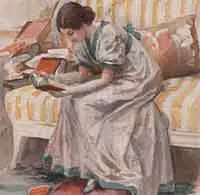 What are Tessellations?
What are Tessellations?
Tessellations are patterns that look similar to floor tiles. It is also called tiling because shapes are placed beside each other to form a specific pattern. Usually shapes are placed beside each other without noticeable gaps and no obvious overlaps. Tessellations can normally be found in various pieces of art like drawings, paintings, or sculptures.
The word “tessellation” may have come from the Latin word “tessella” which refers to small cubes used in mosaic art. These small cubes may be stone, glass, or clay. Others relate the word tessellation to the Greek term “tessera” which means “square”. Since the word’s perceived origins pertain to cubes and squares, tessellation has been also known as “tiling”.
Since tessellations involve a particular shape to be “repeated” over and over again to create a design, some have classified these patterns to many different types depending on symmetry. One type of tessellation is called “regular tessellation”. This refers to shapes which are highly symmetrical in pattern. This type of tessellation can only be achieved by using congruent and equally-shaped patterns like squares, hexagons, and equilateral triangles. Another type of tessellation is called “semi-regular tessellation”. This involves the use of different polygonal shapes which are placed identically on a specific vertex point. Some forms of tessellations are called “irregular” because of non-specific and non-symmetrical shapes are used in the pattern.
Aside from art works, tessellations can also be found in nature. It has been reported that hardened lava sometimes produces various polygonal shapes which are specifically placed beside each other forming a pattern. Most common example of tessellation known to many is the beehive. This is a classic example of a regular tessellation involving hexagonal shapes that serve as the home for a community of bees.
Tessellations are also used in computer-aided design for a variety of purposes like 3D or three-dimensional graphic analysis for use in real-life applications or even for animation.








Leave a Reply